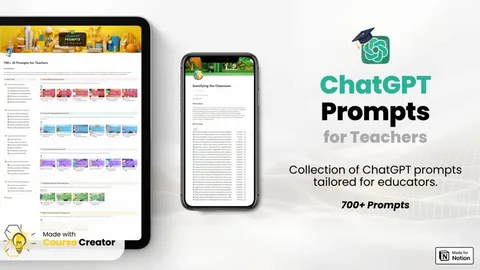In today’s rapidly evolving educational landscape, technology plays a pivotal role in enhancing the learning experience. One of the most promising tools available to educators is Artificial Intelligence (AI). Specifically, teachers can harness AI prompts for teachers to personalize student learning, catering to individual needs and helping students reach their full potential.
Understanding AI Prompts in Education
AI prompts are guided suggestions or instructions generated by artificial intelligence systems. They can assist teachers in creating learning activities, generating discussion questions, or offering feedback tailored to individual students. By using AI prompts, educators can save time while ensuring that lessons are engaging and effective.
Benefits of Personalizing Learning Through AI
- Tailored Learning Experiences
Every student learns differently. Some may grasp concepts quickly, while others require additional support. AI prompts help teachers design activities that match each student’s learning style, ensuring no one is left behind. - Efficient Feedback and Assessment
AI can analyze student responses and suggest feedback or additional resources. Teachers can harness AI prompts to provide instant, meaningful feedback, allowing students to improve continuously. - Encouraging Student Engagement
Personalized prompts can spark curiosity and motivate students. When learners feel that lessons are relevant to their needs, they are more likely to participate actively and retain information.
Practical Ways Teachers Can Use AI Prompts
- Custom Assignments and Worksheets
AI prompts can generate exercises targeting specific skill gaps for each student. This helps teachers move away from “one-size-fits-all” assignments. - Interactive Learning Activities
Teachers can use AI to suggest creative projects, quizzes, or discussion topics based on students’ interests and progress. - Support for Diverse Learning Needs
AI prompts can assist in creating materials for students with different abilities, language skills, or learning preferences, ensuring inclusive education.
Challenges and Considerations
While AI prompts offer significant advantages, teachers must use them thoughtfully. It is crucial to verify the accuracy of AI-generated content and maintain a human touch in teaching. AI should enhance—not replace—the personal connection between teachers and students.
Conclusion
Incorporating AI into the classroom is no longer a futuristic concept. By understanding how teachers can harness AI prompts to personalize student learning, educators can provide tailored experiences that meet each student’s unique needs. With thoughtful implementation, AI can empower teachers, enhance engagement, and ultimately improve educational outcomes.

